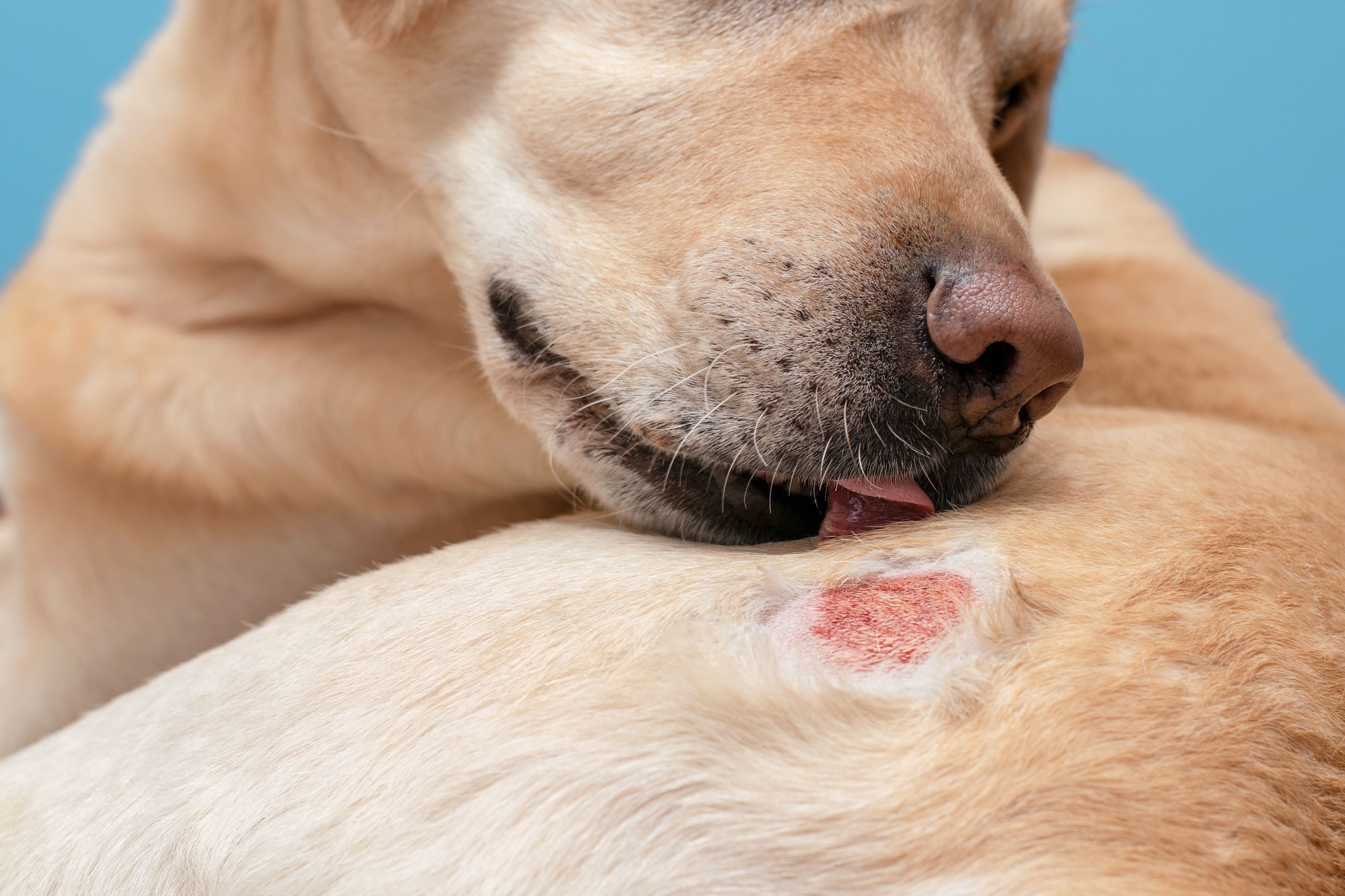A decade of data show benefits of oclacitinib for canine atopic dermatitis
Newer studies and practice insights are reviewed, along with long-term safety concerns and considerations for future uses.
After 10 years on the market, oclacitinib (Apoquel; Zoetis) continues to be a leading treatment for canine atopic dermatitis. A recent review published in the Journal of the American Veterinary Association offers a clinical summary of the drug and insights for expanded use moving forward.1
Oclacitinib, a selective JAK1 inhibitor, is approved for the control of atopic dermatitis (AD) and pruritus associated with allergic dermatitis in dogs at least 12 months of age. At approved doses, oclacitinib shows immunomodulatory effects on Th2 immune cells and inhibits proinflammatory JAK1-dependent cytokines that cause pruritus. Because of the drug's selective mechanism and once-daily dosing interval, broad immunosuppression is limited, making this a favorable choice compared to alternative therapy options such as glucocorticoids, modified cyclosporine, lokivetmab, antihistamines, and essential fatty acids, according to the authors.1
When compared to existing therapies in clinical studies, oclacitinib demonstrated overall superiority in both efficacy and speed of action. Investigators often measured efficacy by improvements in owner- or veterinary-reported pruritus scores over time. Additional markers of success, in various studies, included improved quality of life for pets and owners, fewer adverse events, reduced need for adjunct systemic antibacterial agents, and delayed allergen sensitization.1
Photo: Yulia Usikova/Adobe Stock

Despite oclacitinib’s advantages, concerns regarding its long-term safety persist. Since the standard dosing for oclacitinib is 0.4 to 0.6 mg/kg twice daily for up to 2 weeks, and then once daily thereafter, most studies only assessed the impact of once-daily dosing. When investigators tested an extended twice-daily regimen on dogs with more severe AD cases, oclacitinib retained its long-term efficacy and safety with only minor adverse events and clinically nonsignificant changes in blood labs. Additionally, existing data shows that the risk of malignancies from long-term treatment with oclacitinib isn’t statistically different when compared to the risk from alternative medications.1
As a result of the drug’s marked success, owners and practitioners have started using it off-label for a number of similar indications in other animal species. When used in cats to treat AD, increased doses up to 2 mg/kg twice daily may be warranted due to rapid metabolism. Currently, limited data on the use of oclacitinib in cats exists, especially with regards to long-term safety. Although the existing data demonstrate positive results and few adverse events among felines, reserving oclacitinib for cases of severe, refractory AD or patients with contraindications to approved therapies is prudent, according to the authors. Similarly, existing data on the off-label use of oclacitinib in horses for AD and insect bite hypersensitivity warrants further evaluation.1
Oclacitinib has shown promising results when used off-label in dogs for other autoimmune- and immune-mediated diseases, such as ischemic dermatopathy, subepidermal blistering dermatosis, and ulcerative ear tip dermatosis. Importantly, these results have solely been documented in case reports with varying doses of 0.4 to 1 mg/kg twice daily.Reports of oclacitinib used as an antineoplastic agent have also shown variable results.1
Over the last 10 years, case reports and clinical studies have highlighted oclacitinib’s value as an immunomodulatory agent not only for inflammatory skin diseases, but for a variety of autoimmune disorders. The existing depth of evidence surrounding the drug’s pharmacokinetic profile is profound, and this convenient oral medication proves a reliable alternative to traditional injectable glucocorticoids. Collectively, expanded use of oclacitinib has potential, but further studies are necessary to fully evaluate the safety and efficacy of this medication for nonapproved indications, doses, and animal species.
Gabriela Resto is a 2023 PharmD Candidate at the University of Connecticut in Storrs.
Reference
- Marsella R, Doerr K, Gonzales A, Rosenkrantz W, Schissler J, White A. Oclacitinib 10 years later: lessons learned and directions for the future [published online ahead of print, March 25, 2023]. J Am Vet Med Assoc. 2023;1-12. doi:10.2460/javma.22.12.0570